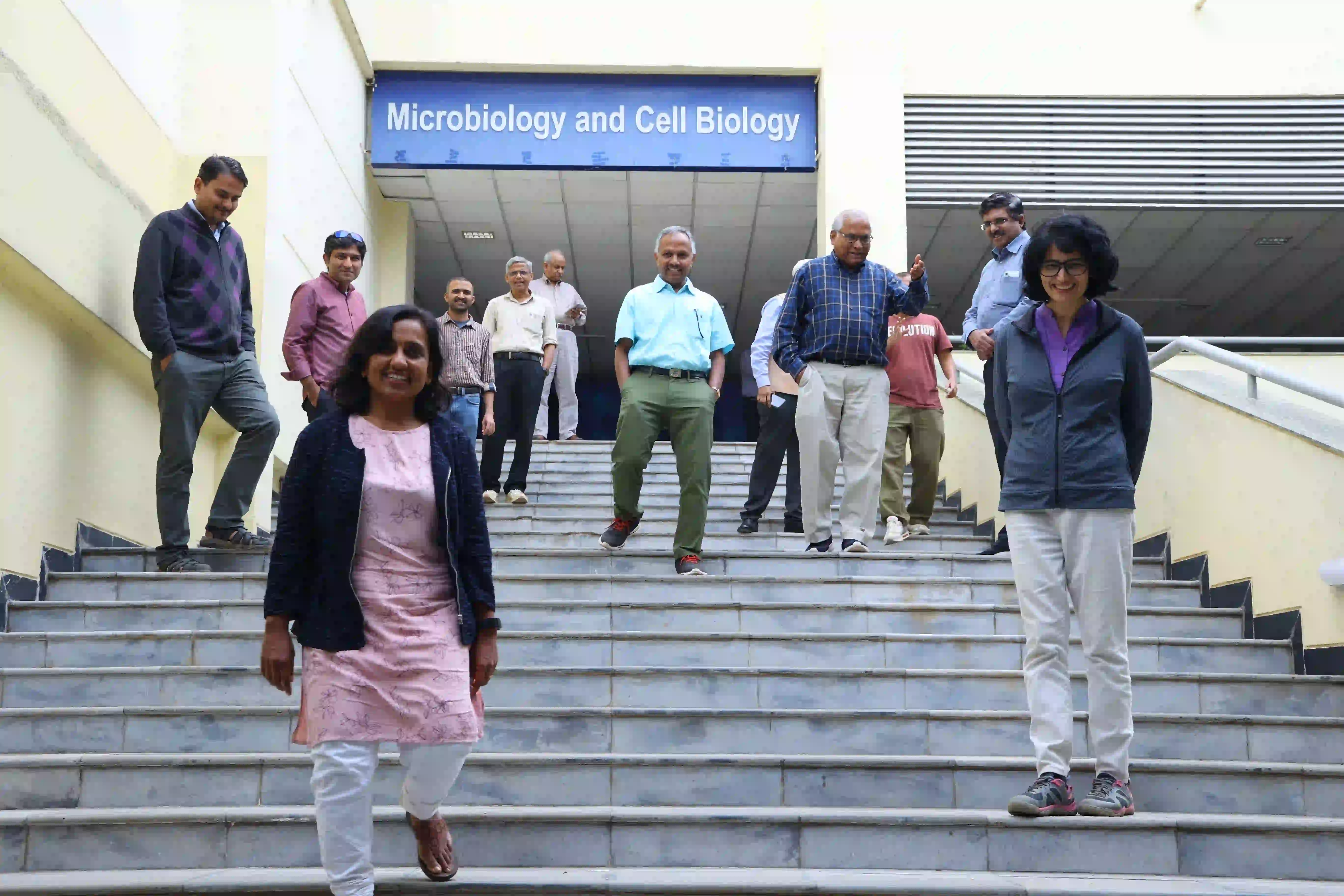

A central question in tuberculosis (TB) research is to identify the mechanisms that allow Mycobacterium tuberculosis (Mtb) to persist and resist drugs for decades in humans. Host-generated redox signals such as nitric oxide (NO), acidic pH, and reactive oxygen species (ROS) have been proposed to be major signals that induce a change in the metabolism of Mtb to facilitate its entry into a drug-resistant persistent state. However, the precise contribution of these signals in manipulating Mtb’s internal redox state and the identity of a sensor(s) that precisely monitors the pathogen’s physiology, persistence, and drug resistance remains unknown. We have filled this knowledge gap and identified several Fe-S cluster-based redox sensors in Mtb.
Basic research in the TB field suffers from the lack of fundamental tools to dissect the biology of TB bacteria during infection. Our research filled this technological void by designing redox-sensitive biosensors to understand Mtb physiology during infection. We have identified fundamental mechanisms that can be efficiently targeted by pharmacological molecules to reverse drug resistance. More significantly, our group investigated the role of physiological processes such as redox, Fe-S cluster homeostasis, hydrogen sulfide (H2S) gas, bioenergetics, and heterogeneity in the Mtb population in promoting disease and reducing the efficacy of anti-TB drugs. Metabolism of cysteine and methionine amino acids is critical for the survival of the most successful human pathogen, Mtb. Cysteine functions as a biosynthetic precursor for essential cofactors such as Fe-S clusters and a primary antioxidant buffer, mycothiol. Fe-S cluster proteins and mycothiol coordinate Mtb’s ability to respire, resist oxidative stress, counteract anti-TB drugs, and establish infection. Therefore, it is essential to understand the pathways that Mtb utilizes to generate cysteine and its subsequent utilization to produce Fe-S clusters and mycothiol. Our group focuses on comprehensively characterizing RTS and FTS pathways in Mtb using cryoEM, metabolomics, biochemical assays, genetic technologies, and animal experiments.
We also focus on HIV and HIV-TB infection to recognize the role of exosomes, mitochondrial activity, and redox in activating HIV from latency. Current state-of-the-art combined antiretroviral therapy (cART) is not a cure for HIV. It can only suppress the virus – cause it to become latent. Unfortunately, in some cases, cART is known to fail even when patients fully follow their drug regimen. Certain adverse effects are also associated with cART, such as the build-up of toxic molecules leading to ‘oxidative stress’ and loss of function in the mitochondria, the cell’s powerhouse. These effects can contribute to inflammation and organ damage. Stopping cART is also not an option because the virus can reactivate – emerge from its latent state – in the absence of therapy. Our lab exploited a tool to measure oxidative stress in HIV-infected cells. We showed that the chemical agent N-acetylcysteine was able to suppress HIV reactivation from latently infected cells. Our lab has also examined the effects of counteracting oxidative stress by artificial antioxidant nanozyme technology during HIV infection. Since H2S also functions as an antioxidant molecule, we wished to see whether our prior insights on oxidative stress and HIV could be translated to show the contribution of H2S on HIV infection.
We study the effects of the natural generation of H2S in HIV-infected cells and on supplementation with chemical donors. Our results suggest that the maintenance of HIV latency and reactivation are closely linked to the H2S levels in infected cells. Our studies open the door to supplementing cART with chemical donors of H2S to lock HIV in a state of deep latency.

Email : bhavan@iisc.ac.in
Designation : phd_student
Category : Microbiology, Virology, and Immunology

Email : Gopika@iisc.ac.in
Designation : phd_student
Category : Microbiology, Virology, and Immunology

Email : harsha@iisc.ac.in
Designation : phd_student
Category : Microbiology, Virology, and Immunology

Email : hussain@iisc.ac.in
Designation : phd_student
Category : Microbiology, Virology, and Immunology

Email : isheta@iisc.ac.in
Designation : phd_student
Category : Microbiology, Virology, and Immunology

Email : liana@iisc.ac.in
Designation : phd_student
Category : Microbiology, Virology, and Immunology

Email : madhura@iisc.ac.in
Designation : phd_student
Category : Microbiology, Virology, and Immunology

Email : neeru@iisc.ac.in
Designation : phd_student
Category : Microbiology, Virology, and Immunology

Email : ragini@iisc.ac.in
Designation :

Email : shalini@iisc.ac.in
Designation : phd_student
Category : Microbiology, Virology, and Immunology

Email : shrestha@iisc.ac.in
Designation : phd_student
Category : Microbiology, Virology, and Immunology

Email : shubham@iisc.ac.in
Designation : phd_student
Category : Microbiology, Virology, and Immunology

Email : vikas@iisc.ac.in
Designation : phd_student
Category : Microbiology, Virology, and Immunology

Email : vishal@iisc.ac.in
Designation : phd_student
Category : Microbiology, Virology, and Immunology